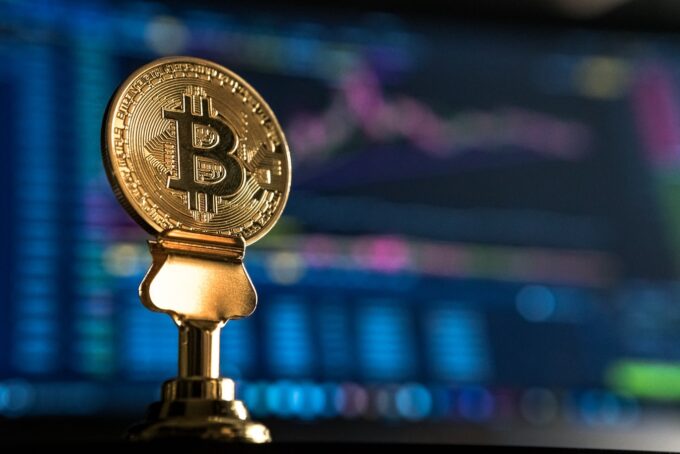Have you gone digital with the modern currency? Cryptocurrencies are getting more adoption by investors in various regions across the world. While using the digital currency, including bitcoin, has its benefits and challenges, traders and investors prove to make it stick.
Again, individuals understand the involved risks but are still creating more virtual accounts and embracing everything it accompanies. It may be challenging for beginners to get the terminologies involved and investment options to choose from. But, with time, you’ll get familiar and make wiser decisions with cryptos. This article discusses how to understand market pricing for cryptocurrencies. Please keep reading to know.
Factors affecting the pricing of cryptocurrencies
The following are factors influencing virtual currency pricing. They are:

Supply and demand
Most states with fixed foreign exchange rates can potentially manage currency circulation in various ways. For instance, by adjusting the reserve requirements and the discount rate plus engaging in open market tasks. The three options allow a centralized bank to work on a currency’s exchange rate. Considering cryptocurrencies supply say bitcoin is influenced differently, including its network system only allowing new bitcoin creation with a fixed price. The introduction of new bitcoins is done following block transactions by miners.
Additionally, their production is slowed with time. An illustration could be, in 2016, the rate reduced from 6.9% to 4.4% in 2017, and 4.0% one year later. Such actions can lead to high bitcoin demand at a quicker rate than its supply.
Consequently, the price goes up. A slow bitcoin circulation is driven by the halved block rewards given to miners for their work, which may be regarded as inflation in the digital monetary system.
Another thing is the total number of the currency allowed to exist in the system. It dramatically impacts its supply. Take the bitcoin example that has about 21,000,000. It means miners can’t continue yielding more bitcoins once the 21 million is reached. So far, bitcoin has over 18 million supply in the market that’s available in late 2019. By the time all the amount is out, the pricing will heavily rely on legal, readily transacted, and of course, demand. At this point, inflation causing halving rewards for miners won’t affect the virtual currency anymore. You should also note that no mining of the last bitcoin until after twenty or so years.

Production cost
Even though a currency may be virtual, it’s a product produced for trade, thus has costs incurred on production. The main expenses are felt in power consumption. Still, on bitcoin-has, the number of references, its mining is through competition by individuals trying to solve a complex cryptographic mathematics problem.
The winner is rewarded in bitcoin blocks plus other fee transactions accumulated in between the last win and the current. The only difference between produced goods and virtual currency is finding a bitcoin block once in 10 minutes. As a result, the more the number of joining competitors, the more difficult it is to solve the math, hence more expensive to find a solution. One may end up wasting too much time, electricity, and others.
Competition
The virtual system has several cryptocurrencies in the market ranging from Beenz, Litecoin, bitcoin, ethereum, and many more. All these are vying to be used by investors. Currently, bitcoin is the most dominant, with a higher percentage of user attention. Its competitors, like Initial coin offerings- ICOs and Ethereum, are consistently on its neck. It’s because of limited entry regulations. For users, the crowding and high competition favor their side in that prices go low. Bitcoin is lucky to have higher visibility, thus gains more investors.

Presence of currency exchange
You notice equity investors usually exchange stocks over indexes. The same happens with cryptocurrencies investors trading virtual currencies over coinbase and others. In other words, if you want to win more participants, let the exchange be popular. Doing that impacts the network system. Rules governing the addition of different currencies may be set in the long run.
Forks and governance strength
Most virtual monitors have doubted security. For instance, bitcoin mainly depends on miners and developers to safeguard transactions; no central body or agency is in charge. Most challenges on the system are consensus guarded, resulting in frustrated members whose essential matters take long to be resolved. Delay in transactions is the main issue. The software can only carry out three transactions every second. Earlier with fewer users, it wasn’t a big worry, but now there’s a high demand for cryptocurrencies use, making the process slow. This mainly causes a shift from one currency to another, creating competition, reducing the pricing.

Legal rules and regulations
The tremendous growth of cryptocurrencies use has raised a debate on how virtual money should be classified. Some organizations classify it as securities, whereas others, commodities. Such an argument causing confusion concerning the regulator to set regulations and rules for virtual currencies is developing uncertainty among investors. The impact on prices is felt differently, including it may lead to a reduction in price volatility, making investors bet with their finances, thinking the prices can change in the future. Again, there will be more bitcoin access to investors that can’t buy bitcoin, leading to higher demand.
The Bottom Line
What causes the rise and fall of cryptocurrency prices? The main is supply and demand. Other causes are competition, whereby investors have several options to invest in the virtual currency. Consequently, every system would vie for their attention by possibly reducing their rates and restrictions to win them. Another cause is legal rules and regulation matters that bring uncertainty to users. Others are forks and governances and currency exchange availability.
Knowing about cryptos and their pricing determinants is essential for letting you know the best timing for investing. Again, you can easily decide, be it joining any, if you haven’t joined yet or withdrawn. Uncertainty and volatility are perilous in investing. Learn the best coins to invest in from a Fortune Credit and avoid messing with cryptocurrencies. Be wise and make the best decisions.









